#frau holle
Note
How long did it take for Santa and Krampus to go from enemies to lovers? And who initiated the polycule?

In my canon, Nick and Kramps first met in the Alps sometime around the turn of the second Millennium. Krampus was terrorizing a village one day, so some Christian converts called upon the Saint to come and protect the children from the demon. Krampus is technically a nature spirit, not a demon, and so Nick was having trouble figuring out how to stop the beast.
Fortunately, a young Befana was dispatched by Perchta to fetch Krampus and found the two duking it out in the town square. Thinking quickly, she created chains and shackles out of Nick's shadow, which he used to bind him successfully.
Perchta decided that it would be an apt punishment for Krampus to remain shackled to the Saint and be his twisted reflection. Krampus dispised his situation at first, expecting to be treated like some wild animal to be tamed or put on display. But Nick always treated him with respect. He always treated him like a fellow man. Perhaps it was Befana's mediation...perhaps it was Nick's "I could fix him" attitude...maybe it was even Krampus' "I could make him worse" attitude...but something eventually clicked between the three of them.
By the 14th-15th century, their love for each other became apparent. I think...I think Nick would have been the one to admit his feelings while Befana would have been the one to propose a polygamous relationship.
#ask#misfits in toyland#tales of the otherfolk#worldbuilding#lore#santa claus#krampus#befana#perchta#frau perchta#mrs. claus#st nicholas#frau holle#mythology#my art#sketches#comic#polyamory
83 notes
·
View notes
Text

The Red Fairy Book
1921
Artist : Lancelot Speed
« Mother Holle »
402 notes
·
View notes
Text

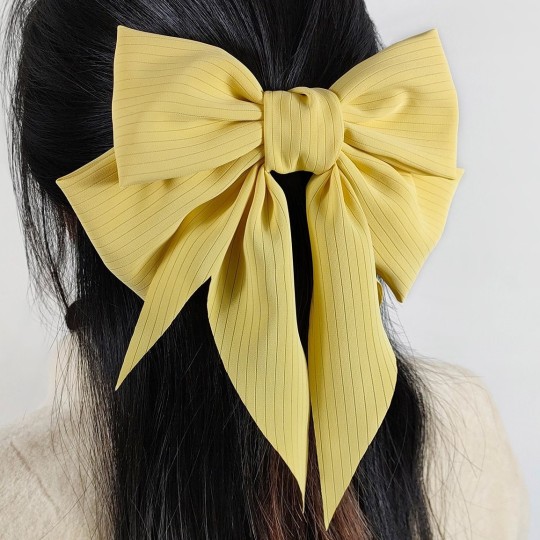



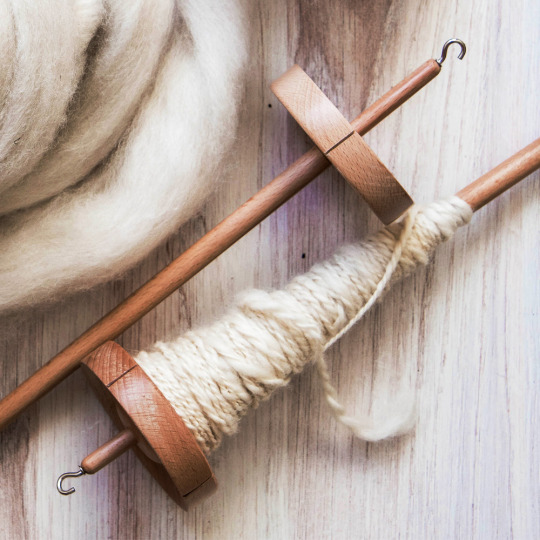



Maple Spinner
Parent's Story: Mother Holle (Frau Holle)
Powerful Qualities: Creative, Integrous, Optimistic
Roommate: Mildred Goldstraw
Secret Heart’s Desire: I would love to open my own bakery one day. I love baking bread and other sweets.
My “Magic” Touch: I can always tell when something is ready to be taken out of an oven. I know it doesn’t sound very cool, but it has saved a few loaves from being overbaked.
Storybook Romance Status: Marcel Prince is really sweet, but Ian Lear,… OH! You know what! Nevermind! It’s not important!
“Oh Curses!” Moment: I tend to say “Yes” even when I should “No.” I can’t help it! When someone asks for help, I have to help them!
Favorite Subject: Cooking Class-ic. I love learning new recipes!
Least Favorite Subject: Dance Class-ic. I have two left feet.
Best Friends Forever After: My sister Birch, Alanna Dale, Ivy Eden, and Ginger Breadhouse.
#my posts#ever after high#art#eah#aesthetic#moodboard#maple spinner#frau holle#mother holle#mildred goldstraw#birch spinner#alanna dale#ivy eden#ginger breadhouse#cottagecore#cottage aesthetic#naturecore#rebel#grey haired girl#the golden girl#eah oc
21 notes
·
View notes
Text
Frau Holle Rosary (SOLD)
White Moonstone, Elderwood, Snowflake Obsidian, & Goose Bone.
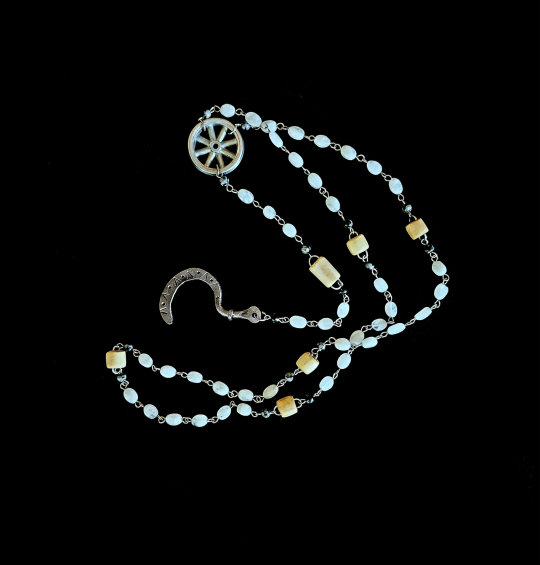
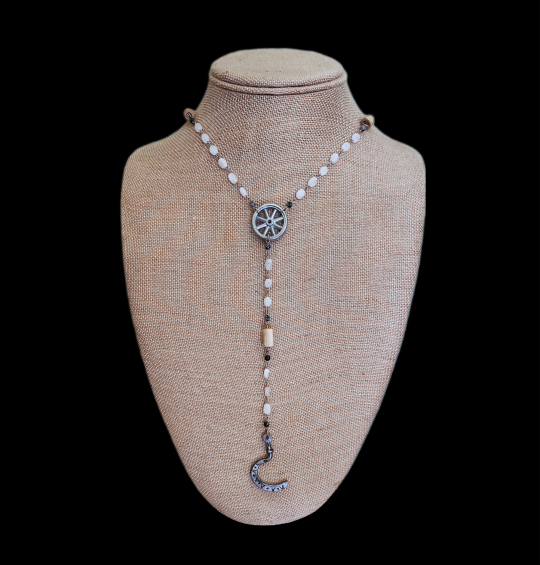
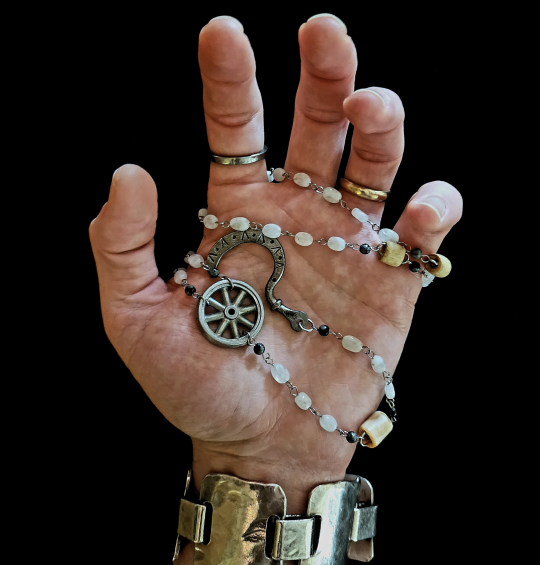


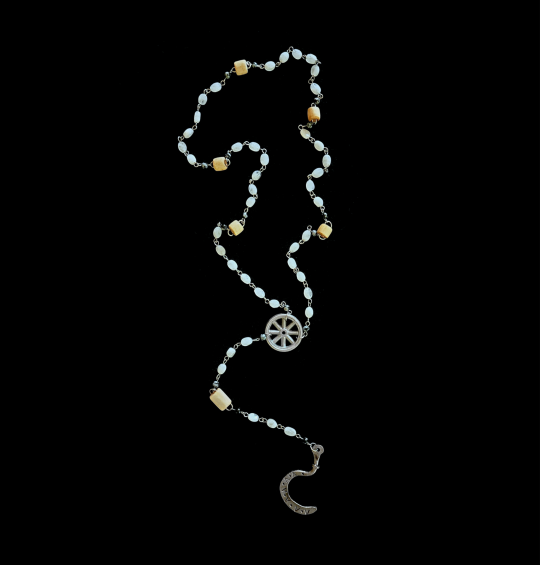


This set of devotional beads was ritually hand-crafted in the name of the ancient Germanic goddess Holda, known by a wide variety of other names, including Holle, Hulda, Perchta, Berchta, Harke, and Werra.
This rosary was strung with White Moonstones, honoring her traditional epithet of "White Lady," as well as her Dianic associations. These are interspersed with handmade counter beads of Elderwood, since the Elder Tree is greatly significant to her—in part due to her own associations with the arboreal spirit known as Elder Mother. The counter beads are bracketed with small beads of Snowflake Obsidian, honoring both her association with the Winter, and her traditional epithet of "Dark Grandmother." The drop-bead is carved from scavenged Goose Bone, in honor of her sacred goose, which she rides as a flying steed while leading the Wild Hunt. The centerpiece connector is a vintage Pewter Wheel, which honors Holda's ties to the crafts of spinning and weaving. The Focal pendant is an Iron Sickle—the sickle being a traditional symbol of hers—which was ritually crafted in honor of the goddess.
This piece measures approximately 20 inches / 50 centimeters in length, and all connection pins and rings are made from stainless steel. If interested in acquiring it, please feel free to reach out here or visit my shop, Wending Wares.
#frau holle#holda#hulda#perchta#pagan rosary#pagan devotional beads#devotional beads#witch rosary#witch beads#ritual tools#ritual beads
22 notes
·
View notes
Text
Prayer to Holle
Keeper of the sacred well,
the portal to the Otherworld
Lady of the silence of winter,
whose pillows bring the snow
Goddess of magic and the hearth,
who teaches integrity is rewarded
I love and honour you
Keeper of secrets and stillness,
of the journey turning inward
Lady of the Winter nights,
who leads the raucous Wild Hunt
Goddess of soft smiles,
and a steady, guiding hand
Bless and walk with me this day
#prayer a day#day 11#deity#holle#holda#frau holle#vrouw holle#dutch myth#dutch goddess#dutch pagan#goddess#paganblr#paganism#pagan#prayer#poem
37 notes
·
View notes
Text
Romanian witches: Baba Dochia
Originally I wanted to talk about only one "Romanian hag" from the world of fairytales, but from this one entity I ended up talking about Muma Padurii and Baba Cloantza and many more... Because there is never just one "baba" or one "muma" in Romania. There is a whole series of malevolent hags and magical old women which all embody in one way or another the benevolent, malevolent, or neutral aspects of the archetypal Romanian witch.
I will mention that Wikipedia lists the Muma Padurii/Baba Cloantza in her wicked form as one of the three recurring fairytale villains in Romanian fairytales, alongside the "balaur" (the "dragon", a winged multi-headed evil snake that comes in three variations 1) air-dragon that causes/lives in storms 2) earth-dragon living in chasms and pits and associated with gems 3) water-dragon, usually killed by the saint - see the legend of saint Georges) and the "Zmeu" (Zmei in plural, the Romanian variation of the Slavic creature of the same name, usually a giant sorcerer but which sometimes appear as a dragon)
But now I finally reach the witch I originally wanted to talk about. Baba Dochia. I learned at first about her when looking at an article which covered the Romanian translations of the brothers Grimm "Frau Holle", and this article evoked how in Romanian translations, often the legendary character of Frau Holle was replaced by a Romanian folkloric being: Baba Dochia (which the article did compare to the Baba Cloantza as an aspect of the "fairytale wicked witch"). With the bonus that the Baba Dochia is closely linked to the weather and to seasonal changes, which explains why she can fit the role of Frau Holle.
Here is what the article had to say about the Baba Dochia.
She is one of the many supernatural "babas" of Romanian legends (remember, "baba" simply means "old woman", the same way the German "Frau" means "lady" or "miss"). Baba Dochia ha, like Frau Holle a weather role - Baba Dochia is a manifestation of the cold weather and the winter season. Or, to be more precise, Baba Dochia is only a manifestation of the end of winter. The whole thing of Baba Dochia is that her "weather role" takes places during the beginning of March, a set of nine days that are typically called the "babele" (plural of Baba). This era marks the end of winter and the beginning of spring - a shift of seasons usually symbolized as a fight between two entities. Baba Dochia is supposed to wear nine "cojoace" (coats made of sheep's skin), representing how cold the weather is. During these nine days, when the weather is violent, unpredictable and constantly-shifting, Baba Dochia will remove each of her coats, one per day - and the more coats the take off, the hotter the air becomes and the more snow melts. In fairytales, this "seasonal battle" usually has the spring season symbolized by the "prince Charming" figure.
This is the case of a specific Romanian fairytale that is an equivalent of the Grimm's "The three little men in the woods". In this fairytale the Baba Dochia is a wicked stepmother that sends her martyrized stepdaughter to a frozen stream, to wash black wool until it becomes white. The stepdaughter encounters a beautiful young man named Martisor (I am not adding the accents here because my keyboard is not equiped for it) who embodies spring: not only does he help the girl, he also gives her flowers (we are in winter). When the stepdaughter returns she manages to get her accused of cheating on her husband (because after all you know, she accepted the flowers of a handsome stranger in the woods... It can look bad in an old countryside society) ; but these flowers will cause Dochia's downfall. She believes these flowers mean spring is here (when in fact it is still winter), as such she goes to the mountain with her sheep as she does every spring... but she just ends up frozen to death there, and all her sheep with her. This folktale is tied to the rocky landscape of several mountains - a type of mineral manifestation called "Babele" and which is supposed to be Baba Dochia and her sheep, petrified into stone.
Baba Dochia also appeared in the works of Mihail Sadoveanu, but this author decided to reinvent the character as a less wicked and more tragic character. In his own take on the story of Martisor, Dochia isn't the wickedness of a cruel season that needs to end ; but rather she suffers from the deep gap between the human world and the "otherworld". Otherworld that Baba Dochia represents: she is a witch-like old woman with obscure powers and a shadowy domain, living all alone in a little cabin at the top of the mountain, isolated from all civilization. One day, she adopts a young orphan girl and she raises her with love - but away from all other human presence. The young girl, who is a plain human unlike the otherwordly Baba Dochia, cannot resist her roots, and demands to be allowed to return into humans, in the light-filled world of the valley. Baba Dochia agrees to let her go there to see the humans - but in the valley, the girl falls in love with the titular Martisor and forgets to return to her adoptive mother. The old woman, alone and heartbroken, ends up freezing to death in the coldness of her little dark cabin.
This was all I could get from the article. To this I will add info from a little brief Internet research:
An alternate name of Baba Dochia in Bulgaria and Macedonia is Baba Marta, in reference to the spring celebrations of the first of March, Martenitsi, Bulgarian name of the Romanian Martisoare, from which the "prince" Martisor gets his name. Baba Dochia can also be found under this name in Moldavia on top of Romania. In English a translation is "Old Dokia".
A variation of the "babele" name described above: the fifteen first days of March can be called the "zilele babei" (the days of the old woman) (babei/baba refering to the old woman, the herb-healer and the female witch)
There are actually many versions of the fairytale I described above:
First version: Baba Dochia had a son, Dragobete in Romanian, Dragomir in Bulgarian, who married a young girl against his mother's will. Dochia abuses her daughter-in-law and at the end of February sends her to fetch berries in the woods. She is helped by an old man, who is actually God in disguise and produces the berries by a miracle. When Baba Dochia/Marta sees the berries, she believes spring is here, puts on twelve sheep-skins as coats and goes to the mountain with her son and sheep. But due to the rain her coats get soaked and heavy - so she removes them, but the frost suddenly arrives and freezes her to death, with her ship, and her son who was playing the flute.
Second variation: Pretty similar to the first, with a few details changed. There are only nine coats instead of twelve, and the Baba removes them due to the hot weather before the frost suddenly arrives. Her son doesn't go with her to the mountain. The girl isn't elped by God but by the Virgin Mary or a female saint. The girl is precisely asked to go fetch strawberries. And here the Baba and her sheep don't just freeze to death, they are petrified into the "babele" stones found in the mountains.
Third version: The baba sends her daughter-in-law to the river in winter to clean a very dirty coat until it gets white and shining, but the girl fails to do so and cries. A mysterious man arrives and gives her a snowdrop flower which makes the coat white by magic. When the girl returns with the white coat and the flower in her hair, baba Dochia believes spring is here - and she ends up like in the previous tales, frozen/petrified on the mountain.
Fourth version: Again, Dragobete marries a woman against his mother's will, so the baba Dochia abuses her, and notably sends her wash black wool in a stream until it becomes white (an impossible task). The baba specifically forbids her from returning until the wool is white, and since the girl can only freeze her hands in the cold water she cries about losing her husband (that she loves very much). Jesus then appears and offers her a red flower which makes the wool white. When the girl returns Baba Dochia believes springtime came since a man could pick up a flower - and you know the rest, she goes to the mountain with her nine coats, due to the weather she drops them one by one, and when she gets rid of the last everything suddenly turns cold and she freezes to death. (There's a fifth version which is just this story but with twelve coats instead of nine)
Outside of pure fairytales, if we go more into the folklore and myths, scholars debate the possible origins of the Baba Dochia/Baba Marta. Some believe she might be a character born of the old name of Dacia (Dakia in Latin and medieval Greek, close to "Dochia/Dokia"). Others believe she might have evolved from a Byzantine celebration Eudoxia/Eudokia's martyr on the 1st of March. A third theory is that she is the leftover of an ancient Thracian goddess common to the Romanian and Bulgarian territories, a deity of agriculture, fertility, renewal... But all in all the Baba Dochia/Marta was seen as a weather spirit with a quickly-changing mind and unstable temper, and as a result needed to be appeased with offerings. Only by these gifts will she make sure winter doesn't last too long and spring returns (while in fairytales it turned into the Dochia's death causing the triumph of spring). A folkloric ritual consists of leaving the offerings by fruit-trees or under rocks, and if they are left under rocks, people then look which kind of insect live or takes refuge there. Depending on whether it is a millipede, a spider, a cockroach or any other thing, it will form an omen about how the year to come will unfold, turning the Dochia offering into a divination ritual.
But as I said before, the baba Dochia was mostly seen as a negative entity - it was said she was a spirit of the bad weather who during the nine "babele" (the nine first days of March during which she removes her nine coats) brought snowstorms and cold winds. Another divination ritual had a woman pick up randomly one of the nine babele-days: if the day turns out to be good weather, they are promised to stay fair and nice in their old days ; if the day has bad weather, it means they will age into a bitter hag. There's a lot of proverbs and sayings tied to the weather and Dochia - which makes her similar to the German Frau Holle. Of course when people say "Baba Dochia removes one of her coats", it means the weather is very warm ; but when it snows people also say "Baba Dochia is shaking her coat".
The Baba Dochia also appears in a little story that is told all the way across Europe (I know this because just a few days ago I read a variation of it among fairytales of Bretagne). The story always goes the same: there is an arrogant or wicked old woman/shepherdess who for a reason or another mocks or threatens the month of March (here a sentient entity), who in revenge steals some days from February to come earlier punish the old lady. In Romanian this old lady is Baba Dochia.
There is also a very WEIRD pseudo-historical legend which tries to explain Baba Dochia as having been a person from the Antique history of the land... According to this tale, Dochia was related to the last Dacian king, Decebalus (she was his sister for some, his daughter for others). When the Roman emperor Trajan conquered the Dacians, Dochia fled into the Carpathian mountains because Trajan wanted to marry her. She disguised herself as a shepherd, and all her servants and followers disguised themselves as sheep. But Trajan kept pursuing her and sending his forces after her, so in despair she prayed to the Dacian god Zalmoxis, who turned her and her fake-sheep into the Babele stones we can still see today. Quite a strange story, heh?
There's also a Christianized, benevolent version of the Baba Dochia - because of course, Christianity is VERY strong in Romania and gets its hands onto every folkloric character it can (this is why in the Baba Dochia fairytales the Martisor-Prince Spring figure gets so often replaced by Jesus). In this sanitized, Christianized version, baba Dochia was a pious old woman whose prayers for winter to end brought spring... Quite a far move from the wicked stepmother.
As a last note: Baba Dochia's son, Dragobete, also plays a part in the "weather symbolism/calendar meaning" of the fairytale. Because while Martisor is the beginning of spring and Baba Dochia the end of winter, Dragobete is actually an old Romanian god of love (often called the Romanian Eros/Cupid) who is celebrated during the "Dragobetele" celebrations on the 14th of February... The Romanian Saint Valentine's day. Dragobete was called in old pagan traditions "he who bets on love" and "the godfather of animals", because he protected and blessed all couples upon his day - as such, you had a sort of human "Saint Valentine" celebration on his feast-day, but you also had an homage to what was believed to be the "engagement of birds". There's a whole set of traditions and legends surrounding this which I will not expand upon here, but it makes sense than that this spirit of the love-day of February is symbolized as the loving husband of the heroine and the son of the hag of the end of February...
#romanian witches#romanian folklore#romanian fairytales#baba dochia#frau holle#fairytale villains#romanian mythology
17 notes
·
View notes
Text
Who is The Witch Mother?
Like the Witch Father, the Witch Mother is the dual-natured Archetypal Divine Feminine. She is life and death, creation and destruction, She is all.
In Traditional Witchcraft, She is an initiator into witchcraft and the being that creates and molds the world to Her whim. The Witch Mother is Witchcraft itself.
The Witch Mother, much like the Witch Father, is another enigmatic spirit essential…

View On WordPress
#Aradia#Baba Yaga#Diana#Frau Holle#Mother Hulda#Mother of Witches#Queen of Elphame#spirit work#Traditional Witchcraft#Witch Mother#witchcraft
26 notes
·
View notes
Text

Nachdem @adarkrainbow seine Posts über Frau Holle geschrieben hat, dachte ich mal, auch hier dieses Bild von ihr zu posten. Das ist von vor zwei Jahren, als ich zum ersten Mal Dario Argentos „Suspiria“ und „Drei Mütter Trilogie“ geschaut habe. Frau Holles Erscheinungsbild hier ist von Heinrich Pröhles „Harzsagen“ über den Sie-Dich-Im in St. Andreasberg, wo sie eher als Spukgestalt gekannnt war. Die Glocke erscheint in manchen Sagen um den Frau Holle Teich.
After @adarkrainbow‘s series of posts on Frau Holle, I thought to post this old piece here! This is from two years ago, when I was inspired by watching Dario Argento‘s „Suspiria“ and his „Three mothers trilogy“. Frau Holle‘s appearance here is based on Heinrich Pröhle‘s „Harzsagen“ around mount Sieh-Dich-Im (Look-Behind) in st. Andreasberg, where she was better known as a boogeyman. The bell appears in some legends about the Frau Holle Lake on the Meißner.
Dopo la serie di post da parte di @adarkrainbow su Madama Holle, ho pensato di postare anche qui questo vecchio disegno di lei. Questo è di sue anni fa, quando ho visto per la prima volta “Suspiria” e la trilogia delle “tre madri” di Dario Argento. Il suo aspetto qui è ispirato alle “harzsagen” di Heinrich Pröhle, riguardo al monte Sieh-Dich-Im, a st. Andreasberg, dove era vista come uno spauracchio per bambini. La sua campana appare in alcune leggende sullo stagno di Madama Holle sul Meißner.
#my art#my artwork#old art#frau holle#mother hulda#madama holle#Fata piumetta#Madama Holda#fairy#fee#fata#folklore#folk tales#fair folk#Hag#hexe#strega#death goddess#dark fairies
9 notes
·
View notes
Note
does krampus mom ever came to visit the island and if she does what horrible things does she do to the toyfolk

She did once but decided not to interfere. She did scold him for its chaotic and untidy appearance, though.
51 notes
·
View notes
Text

Frau Holle (1893) - Hermann Vogel
18 notes
·
View notes
Text

A baba yaga and a mari lwyd try to crash Frau Holle's solstice party
11 notes
·
View notes
Text






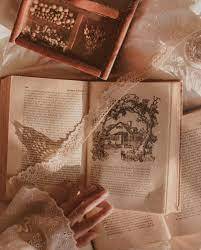


Birch Spinner
Parent's Story: Mother Holle (Frau Holle)
Powerful Qualities: Assertive, Confident, Intelligent
Roommate: Petra Pan
Secret Heart’s Desire: I love studying animals! Well, more like frogs, toads, and insects. I know not everyone likes them, but Hopper shares my interest.
My “Magic” Touch: I know most princesses can understand animals, but I can talk to frogs, toads, and bugs! I think it’s very unique.
Storybook Romance Status: Daring Charming, duh! He’s just the most handsome boy at Ever After! Well, Hopper’s cute too I guess.
“Oh Curses!” Moment: Everyone thinks I’m spoiled just because of how my story goes! I’m just assertive.
Favorite Subject: Geografairy. I love learning all about Ever After’s different environments and the animals that live there!
Least Favorite Subject: Swamp Swimming! I may like a day at the lake as much as the next girl, but in a swamp? No thank you!
Best Friends Forever After: Of course my sister, Maple, my roommate Petra Pan, and also Alanna Dale, Lily Bo Peep, and Hopper Croakington.
Pet: My pet toad, Hopscotch.
#my posts#ever after high#art#aesthetic#eah#moodboard#birch spinner#background characters#frau holle#mother holle#petra pan#maple spinner#alanna dale#lily bo peep#hopper croakington ii#cottage core#cottage aesthetic#gardencore#rebel#girl in grey#the pitch girl#eah oc
11 notes
·
View notes
Photo

They say that things just cannot grow
beneath the winter snow
Or so I have been told
-----
Wolf and Holle content is sure keeping me warm this winter
#they’re platonic to be clear#being friends for centuries you get cozy#puss in boots#puss in boots the last wish#puss in boots wolf#shrek oc#frau holle#death wolf
134 notes
·
View notes
Text
So there's a myth about Holle that at the end of the year spinning is no longer allowed. Lake made a good point saying that it makes sense because winter is here so your family needs warm clothes. In the lead up to the Rauhnächte Holle was thought to visit homes. Those who were industrious would find their spinning done in the morning, those who were lazy found there flax ruined.
I'm learning to crochet. I started this year. I was working on a pouch for my oracle cards that are a bit loose in their box. I've been working on them for a long time because the joints in my hands will flare up after a few rows. But I was almost there, and I really wanted to finish it before the Rauhnächte. I took it on holiday with me and crocheted a few rows. Then when we came back I crocheted a few more. I figured I had about six more rows to go.
Today I take out my work, and it's exactly the size I was aiming for. I swear I was not that far along yet. So I take the cards and measure -- I made it wayyyy too narrow. However, I wanted to do a horizontal pouch with a flap, and upon looking at the box that was never going to fit. So I take my cards again… and what I made (with help?????) is the perfect length to put the cards in vertically. A perfect fit
This is so odd, and so beautiful. I talked before about doubting if what I do is enough, and feeling like I fail at keeping a home. To be blessed by having my work finished, a blessing given to those who are industrious. Wow 💙 Holle is getting an offering tonight

13 notes
·
View notes
Note
What would be the backstory of Shuriki from Elena of Avalor, where did she come from, and why was she so intent on conquering Avalor
Ok so here's what I've come up with:
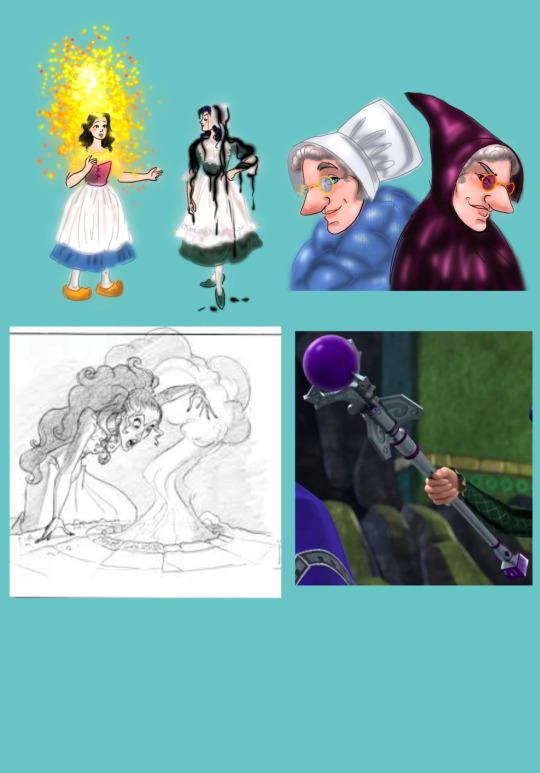
Her real name is Fran, and years ago in the Northern Isles she and her twin sister Nan were taken in as maids a strange old woman called Frau Holle, who turned out to be a sorceress. She blessed Nan for her industry and kindess but cursed Fran for her laziness and selfishness. Nan creates diamonds and pearls anytime she sings and eventually marries a king, while Fran has toads and snakes fall out of her mouth anytime she speaks and is understandablely shunned.
However she doesn't give into her curse and seeks out a way to change her fate, eventually coming to the attention of Frau Holle's twin sister Frau Trude, who's as wicked as her sister is good. Frau Trude trains the angry young girl in magic, breaking the toad spell, and helps her to spread chaos within her sister’s kingdom.
Eventually she is overcome by the forces of good, and Nan, now Queen, in mercy banishes her sister from the Northern Isles. Before she goes though Fran seeks to divine what new opportunities for power lie within her reach, and has Frau Trude divine her future.
The vision is hazy and Fran doesn't have time to hear all of it before th soldiers come to drive her out, but the old witch forsees that she will one day rule over a kingdom across the sea called Avalor, and will hold the powerful "Scepter of the Night" at one point.
Fran takes this as gospel and determines to build up her power again to accomplish this Destiny. And so she does.
Two little side things, part of the reason she bans music is that it reminds her of her sister's golden singing gift (and the cruel songs people would sing about her speaking toads).
And her chosen name "Shuriki" is a mispelled/misheard version of the old Maruvian word "Chiriqui" which means Valley of the Night, as she wanted a name that would point to her destiny to weild the Scepter of Night, and she didnt have enough respect for the culture of the land she took over to spell or pronounce it correctly
#Chiriqui is a real life place name in Panama that really does mean Valley of the Moon#i tried to find an explanation for why her name doesn't really fit her and thats what i came up with#shuriki#elena of avalor#disney#asks#disneyverse#villain backstory#disney villains#my art#frau holle#mother holle#frau trude#diamonds and toads#fairytales
34 notes
·
View notes
Text
To conclude my series of posts about "Frau Holle" (honestly this character is so cool, why isn't there more of her alongside other "great archetypal fairytale witch-goddesses"? She's clearly equal to the likes of Baba Yaga), I will share some elements highlighted by Cyrille François in another article which focused on the brothers Grimm's edit of their fairytales... The article initially covers how the story of "Frau Holle" evolved from the Grimm's first collect/first edition to their final "product", the one we know today.
Because if you didn't know, yes the brothers Grimm collected faithfully all sorts of oral tales around them... But the fairytales we know today are edited versions of the text they collected. For example, when they collected several variations of a same fairytale, they tried to fuse them into one story (this is why the German "Little Red Riding Hood", or rather "Little Red Cap", has two wolves instead of one). They also were known to modify their tales to make them more "German" because their entire point was to collect and preserve purely German folklore. They notably removed all French elements from the fairytales - elements unavoidable since before them THE dominating continent of fairytales was the French one, but elements hated since the French were perceived as the enemies and invaders of Germany... This is why the first edition of the brothers Grimm fairytales contained German variations of purely French stories such as Puss in Boots, Blue-Beard or "The Orange Tree and the Bee", that the Grimms promptly removed upon identifying their French origin ; and this is also why in the first-edition version of several fairytales we can find terms of French origin ("Fee" for "fée", "fairy" or "Prinz" for "prince"), that the Grimms also promptly erased...
Here are some key points of the evolution of "Frau Holle", from the first edition to the last:
In the first edition, the good girl went to the well to fetch water. This made the story closer to its "ancestor" and French counterpart, Perrault's "Diamonds and Toads". By the second edition onward, the girl goes to the well to spin straw ; this was also made to highlight the presence of Frau Holle, which in German legends is a figure associated with spinsters and weaving. It also makes the story more cohesive.
Up until the 1837 version, the text is unclear and vague enough that a possibility is left open: the girl might have thrown herself into the well as an act of suicide, caused by despair. Of course, the Grimms couldn't have that - after all the heroine of a fairytale can't be rewarded for trying to kill herself - and so from 1840 onward it is explained that she jumps in the well to fetch back what fell at the bottom.
In the original version, there is no mention of anything between the moment the girl falls down the well and when she wakes up - later editions precise explicitely that she lost consciousness as she fell, to highlight how the transition went from one world to the next.
In later edition, the brothers Grimm decided to add a mention of the girl's courage and braveness when she accepts Frau Holle's other, as a way to highlight how spooky and threatening the character must look, and how counter-intuitive the choice to serve her is.
The brothers also added several details here and there for practical effect: for example they added that she removes the bread with a baker's shovel (before we didn't know how she removed it), or that she doesn't just pick the apples but also puts them neatly into a pile.
As usual, but it is no surprise to those who know the Grimms: just like in "Hansel and Gretel" or "Snow White", here the wicked stepmother used to be the girl's biological mother, similar to Perrault's "Diamonds and Toads". But the Grimms, due to their worship of the mother figure and the idealization of the family decided to turn the bad mother (such a horrible idea!) into a wicked stepmother (an outsider entering in the family to break it apart, now that's acceptable). [The text notably points out M. Tatar's chapter within her "The hard facts of the Grimm fairytales" called "From Nags to Witches: Stepmothers and other Ogres"]. The change from mother to stepmother also helps the Grimms "rationalize" the mother's favorotism, due to the bad sister being of her own blood.
Originally the character of the bad sister was more akin to the one of "The three little men in the forest", and her main crime was to answer in a bad and dishonest way to the various entities she met in the otherworld. The Grimms only decided later to highlight her main "crime" as sloth, by adding the element of her pricking her fingers to make it believe she spun thread until she bled, as her sister did.
Finally, the Grimms, still out of their desire to present family as some sort of fundamental and essentiel value, changed the passage where the girl wishes to return home. In the original text, it is just said that she grows sad living at Frau Holle's house, and thus demands to leave. In later editions the Grimms explicitely added that the reason for her melancholy was because she longed to return home and to her family: as such, they again point out that, in the moral system they developed, the faithfulness to the family, even if they treat you badly, is a virtue and a sign of goodness. (Again, we all know how fucked up this can be and how fucked up this entire moral ended up becoming in other centuries, but again, that was the Grimm's big thing... They were ALL about family, these two.)
#frau holle#brothers grimm#grimm fairytales#mother holle#fairytale evolution#fairytale history#fairytale analysis#german fairytales
10 notes
·
View notes